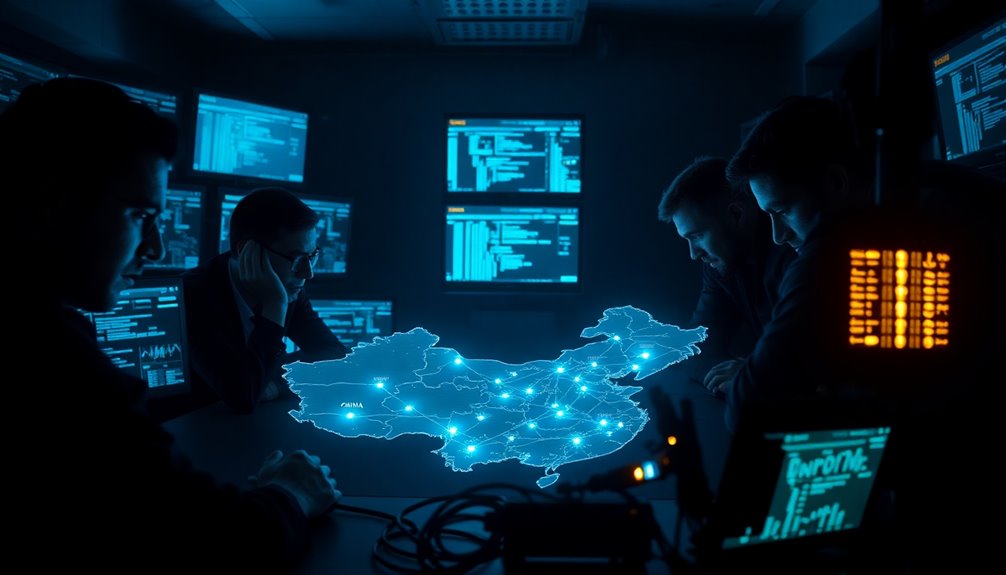
As cyber threats become increasingly sophisticated, Chinese cyber actors have emerged as significant players, targeting various sectors worldwide. You may find it alarming that these actors have focused extensively on the South Pacific Islands and the South China Sea, showcasing their reach into critical geopolitical areas. Their operations extend into the United States, where they've successfully compromised elements of the defense industrial base, revealing a concerning vulnerability in national security.
Their tactics are diverse and highly effective. You might notice that spear phishing is a common technique they employ, enticing victims with malicious emails that appear legitimate. Once they gain access, they deploy sophisticated malware like 'Hidden Lynx' and 'PlugX' to carry out espionage activities. Even more concerning are their use of zero-day exploits, allowing them to take advantage of software vulnerabilities before they can be patched. Denial-of-service (DoS) attacks flood networks, rendering services unavailable and causing disruption.
State-sponsored operations, particularly by APT groups like APT10 and APT41, demonstrate a commitment to persistent targeting. These groups are notorious for stealing intellectual property and sensitive information, aiming to gain competitive advantages across various industries. Their reach isn't limited to one region; they influence governments and corporations on a global scale, causing economic espionage that can disrupt markets. In the South Pacific Islands, Gingham Typhoon targeted nearly every country during summer 2023, highlighting the extent of their influence.
State-sponsored APT groups like APT10 and APT41 persistently target global industries, stealing intellectual property and disrupting markets through economic espionage.
Technological capabilities enhance their effectiveness. AI-generated content supports their influence campaigns, amplifying strategic narratives that can create divisions among populations. Advanced malware like 'Gh0st RAT' grants real-time control over compromised systems, while tools such as 'China Chopper' facilitate ongoing access to networks. Supply chain attacks further complicate matters, as they compromise software or hardware to infiltrate systems undetected.
Global cybersecurity agencies have issued warnings about these threats, emphasizing the necessity of vigilance. Joint guidance has been released to help organizations defend against PRC-affiliated hackers. You should consider adopting a "secure by design" approach to software development and prioritizing vulnerability patching to minimize exploitation opportunities. Monitoring your networks for suspicious activities can also be invaluable in detecting intrusions.
The economic and security implications of these cyber threats are profound. Disruptions to critical infrastructure can lead to severe economic consequences, and personal data theft poses significant risks. As you navigate this complex landscape, remember that the activities of these cyber actors can have a global impact, shaping not only national security but also international relations.









